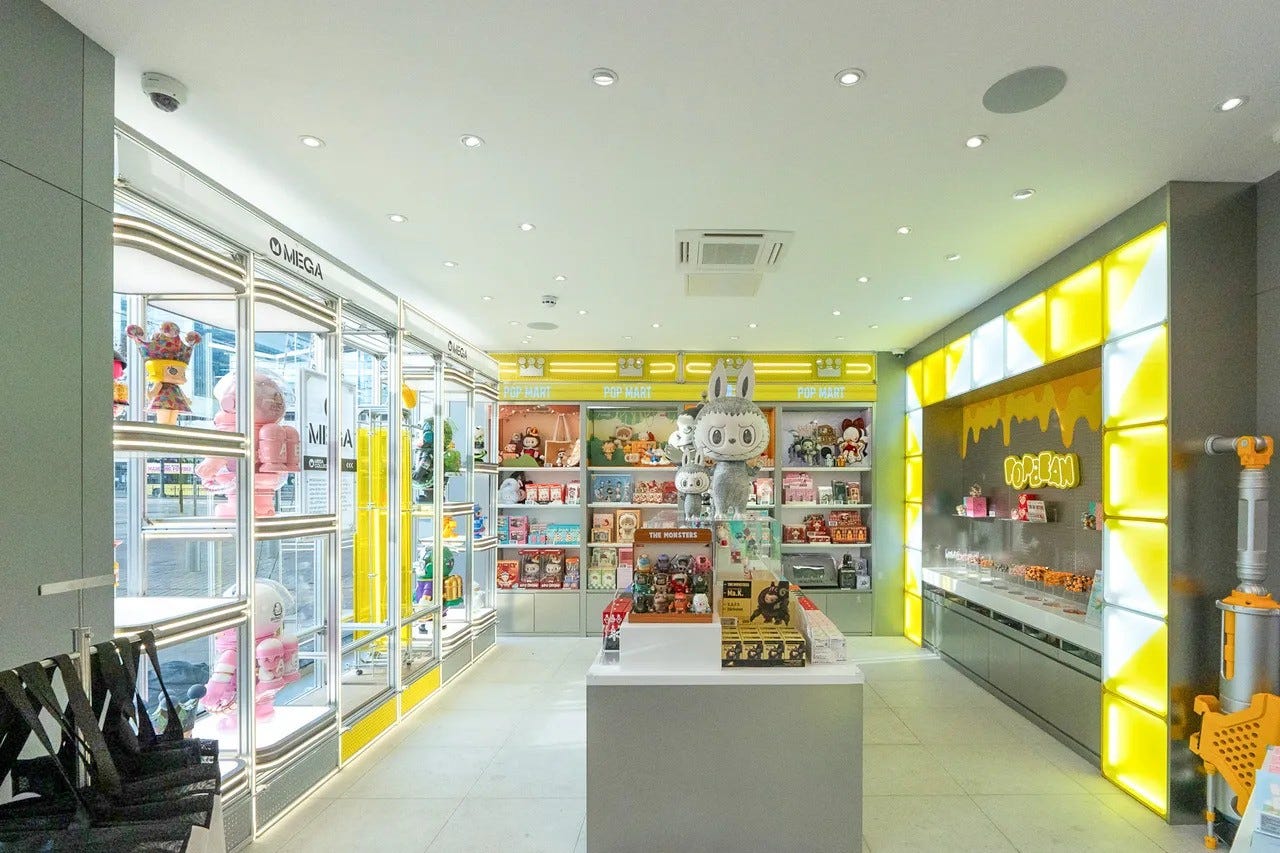Labubu, and why queueing is interesting to the quick commerce generation
Young people - a generation brought up in a world where queueing in retail has been designed out - are choosing to queue.
I’m as interested in the reactions to the queues for Labubus (Pop Mart’s viral toy) as I am in the queues themselves.
Under every post on every channel about this phenomenon, roughly 80% of the comments are something like this: “Why are people queueing hours for that? What a load of rubbish”.
It’s a reasonable response, but it totally misses the point - and massively underestimates far more significant behavioural shifts that sit underneath these long queues.
Because this isn’t happening in isolation. Anyone who's ever been on a retail safari with me will have seen long queues to get into stores - and in some cases, those queues don’t even lead to the gratification of buying some sought-after product.
Young people - a generation brought up in a world where queueing in retail has been designed out - are choosing to queue.
To some extent, the queue itself is the experience.
Let’s call them Generation Queue. Why are they so happy to stand in line? And what else are they queueing for?
The latest in a long line of lines
Labubu is just the latest - and perhaps most well-publicised - example of an increasingly familiar story: young people standing in long queues for things older people don’t understand.
On the more familiar, rational end of this phenomenon you have queueing for big ticket new releases. Seeing people queue for a Nintendo Switch 2 feels entirely normal. Queues for discounted TVs at a department store on Black Friday almost feels nostalgic. The good old days.
Elsewhere, queueing feels different. For a brand like Supreme, queueing is as normal as self-checkout is for a supermarket. Queueing is the experience - even when the in-store experience appears to the non-aficionado as remarkably bland.
In pop-ups like Harry Styles’ Pleasing stores, or Louis Vuitton’s Murakami collabs, queueing is built into the design brief. For the strategists behind the space, and many of the fans visiting, the reward is content rather than a product. The Instagram post is the experience.
The Labubu queue, meanwhile, is in another category of scarcity-driven viral products. Fuelled by social media, the product itself seems, to the uninitiated, like nonsense. But a formula of massive demand plus insufficient supply has led to queues sometimes lasting entire days, where many people don’t actually manage to buy any nonsense.
And again, this is by no means new. I still remember niche fashion brand Cactus Plant Flea Market teaming up with McDonald’s to create a limited run of Happy Meals that featured CPFM designs and figurines.
Cue, queues. And an enormous resale market online.
In short, what’s happening with Labubu isn’t new, but it’s indicative of something that’s becoming more familiar. Young people are not only engaging in physical retail, but engaging in that most traditional of retail pastimes - standing in a long line.
Why are they happy to do this?
The gamification of the buying process
Despite millions of people around the world still focusing on the opportunities they see to optimise buying processes further, let’s be honest and frank: buying stuff is already really fucking easy.
For most of the western world, and a fair chunk of the rest, most of the buying process involves thinking, removing your phone from your pocket and then tapping away a bit.
And various innovations, from self-checkout to quick commerce, have all come of age at the exact point that young people have come of age.
Digitally native feels too imprecise to describe all this. It’s bigger than that. To most young people, this isn’t convenience or efficiency or online shopping. It’s just shopping - and even the most minor barriers between you and the things you want are gone.
Take quick commerce alone. Regardless of what we think of it or how unprofitable it may be, it’s become normal to a whole generation of people to think “I need some avocados, Shredded Wheat and some batteries” and then to receive those items 15 minutes later.
If this kind of experience represents normality, I think it’s possible that the opposite becomes strange and alluring. When everything is available immediately, maybe scarcity is exciting. And when commerce is rapid by default, maybe slowness is cool.
Young people rebel - it has always been so. In a sense, the buying process has been gamified by Pop Mart accordingly, with a transformative impact.
And observe the behaviours in these queues. The queue is the experience. Excited fans chat with one another. Videos and photos abound, as often sharing the queue as the product itself.
For older shoppers, the idea of a queue triggers memories of pre-digital retail, where queueing wasn’t just for Japanese toys but for literally anything, depending on the time of day. Ecommerce was a game-changer, mobile commerce revolutionary, and quick commerce mind-blowing. It was, and to some degree still is, all novelty - and all exciting.
For young shoppers, this is all quite boring - because your parent’s reality almost always is.
Queues are back. And the good news is, whatever lies at the end of them might not even matter.





